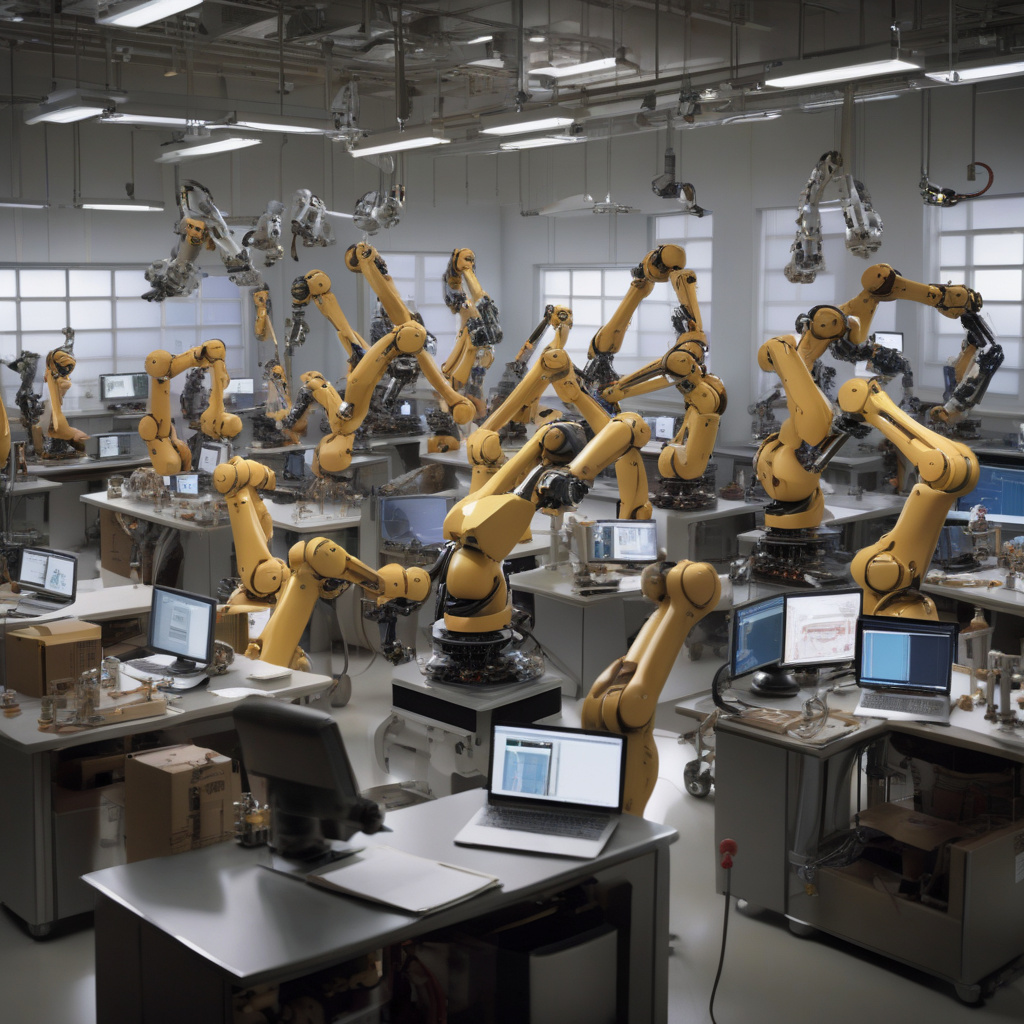US Robotics Firms Advocate for Federal Support to Compete with China’s Rapid Growth
In the fast-paced realm of robotics, the global landscape is witnessing a significant power shift. With China’s rapid advancements in technology and innovation, US robotics firms are feeling the pressure to stay competitive and maintain their leading position in the market. To address this challenge, industry executives have been actively lobbying lawmakers for policies that would bolster America’s foothold in the ever-changing world of robotics.
The rise of China as a formidable player in the robotics industry has been a cause for concern among US firms. With substantial investments in research and development, coupled with a supportive regulatory environment, Chinese companies have made significant strides in robotics technology. This has put US firms on high alert, prompting them to seek federal support to level the playing field and ensure their continued success in the global market.
Industry executives are advocating for a proactive approach from the government to address the challenges posed by China’s rapid growth in the robotics sector. One of the key areas of focus is investment in research and development to drive innovation and maintain technological leadership. By allocating resources towards cutting-edge research initiatives, US firms can stay ahead of the curve and continue to deliver state-of-the-art robotics solutions to the market.
Additionally, industry leaders are pushing for policies that support the growth of domestic manufacturing capabilities. By incentivizing companies to produce robotics components and products locally, the US can reduce its reliance on foreign suppliers and enhance its supply chain resilience. This not only strengthens national security but also creates job opportunities and fosters economic growth within the country.
Moreover, there is a growing emphasis on workforce development and education to cultivate the next generation of robotics professionals. By investing in STEM (Science, Technology, Engineering, and Mathematics) education programs and vocational training, the US can ensure a steady pipeline of skilled talent to drive innovation in the robotics industry. This focus on human capital development is essential for maintaining America’s competitive edge in the global market.
In light of these efforts, US robotics firms are looking to policymakers for support in the form of regulatory frameworks that promote innovation and competitiveness. By establishing clear guidelines and standards for the robotics industry, the government can create a conducive environment for growth and investment. This regulatory certainty is crucial for attracting capital and fostering entrepreneurship in the robotics sector.
As the dynamics of the global robotics market continue to evolve, US firms recognize the importance of strategic partnerships and collaborations to stay ahead of the competition. By fostering alliances with academic institutions, research organizations, and industry peers, companies can leverage collective expertise and resources to drive innovation and accelerate growth. These partnerships not only enhance the competitiveness of US firms but also contribute to the advancement of the robotics industry as a whole.
In conclusion, the push for federal support by US robotics firms underscores the need for proactive measures to strengthen America’s position in the global market. By advocating for policies that promote innovation, investment, manufacturing, education, and collaboration, industry executives are laying the groundwork for sustained growth and competitiveness in the ever-evolving field of robotics. With the right support from policymakers, US firms can navigate the challenges posed by China’s rapid growth and emerge stronger and more resilient in the competitive global landscape.
robotics, US firms, federal support, global market, China’s growth
